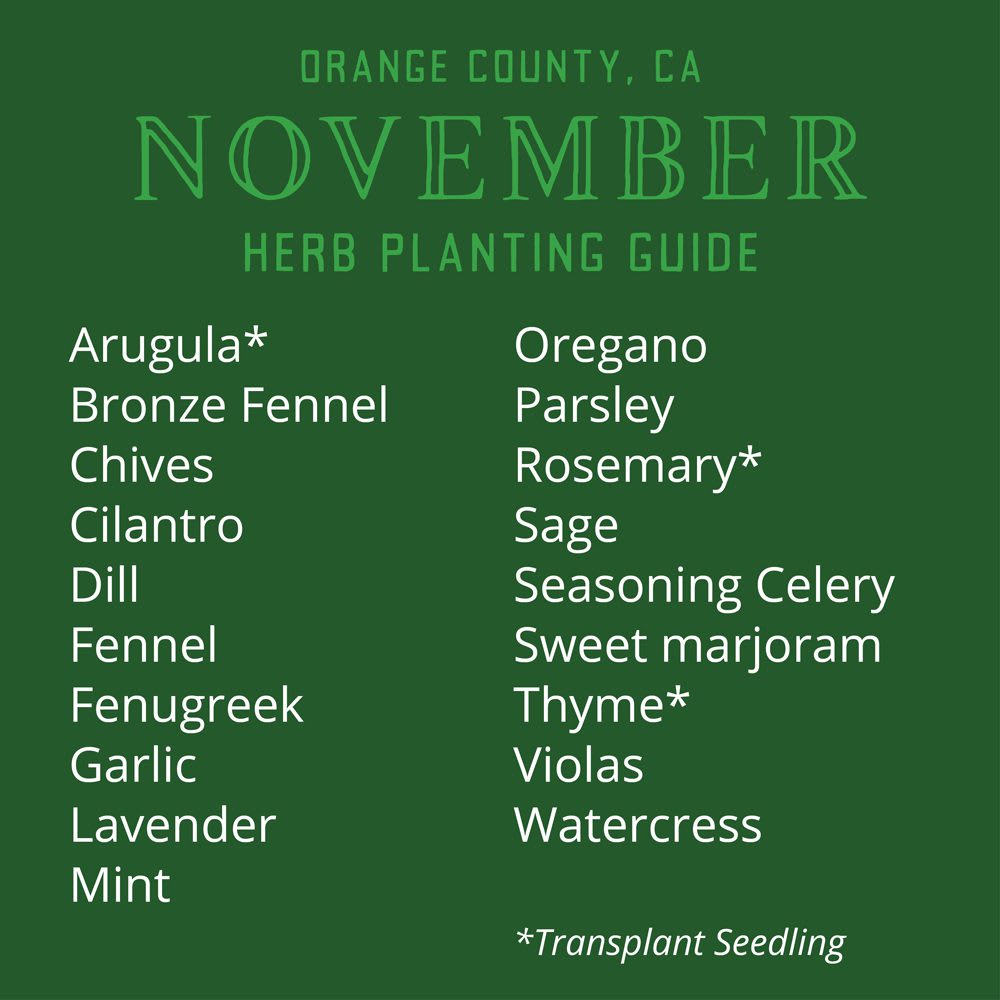Orange County November Planting Guide
November 4
3 MIN READ
0 Comments
365 days of growing in Southern California.
Our nights may be getting cooler, but the the temperatures during the day are still warm enough to help our gardens grow. There are plenty of cool season options to keep harvesting for the next few months.
As November descends upon us, now is the perfect time to get up early and spend some time in the garden planting new seedlings and planning for the spring! Heirloom Potager is designing new garden installations for commercial and residential clients and will be planting again in the neighborhood community garden. Check out the Orange County CA November planting guide.
Planning Your Fall Garden with Warm + Cool Season Plants
Here are a some great options for your November planting list:
Don’t forget to plant your garlic and strawberries for the spring! These are the last months to get them proper warmth for root development.
Artichoke, Asparagus, Beets, Bok Choy, Broccoli*, Cabbage*, Carrots, Cauliflower*, Daikon, Endive, Kale, Lettuces, Mustard Greens, Onions, Parsnips, Potatoes, Radicchio, Radish, Scallions, Snow Peas, Spinach, Strawberries, Sugar Peas, Swiss Chard, Tomatoes
Herbs: Arugula*, Bronze Fennel, Chives, Cilantro, Dill, Fennel, Garlic, Fenugreek, Lavender*, Mint, Nasturtium, Oregano, Parsley, Rosemary*, Sage, Seasoning Celery, Sweet marjoram, Thyme*, Violas, Watercress
*Transplant Seedlings
Unique Heirloom Varieties to Plant this Season
Practice Companion Planting for Your Fall Garden
Companion planting is a very old-world, organic gardening method rooted in creating a diverse ecosystem of fruits, vegetables, herbs, and flowers grown int he same space. As a result of inter-planting, you’ll create a more habitable environment for plants, improve soil health, and reduce the resources needed to grow sustainable amounts of produce.
Consider inter-planting some herbs with your fruits and vegetables this year to attract more pollinators and help keep pesky bugs at bay.
With a long and tenured history, the practice of companion planning was primarily practiced by home gardeners who weren’t driven solely by efficient outputs. However, as the impact of climate change grows and concerns over the use of pesticides for health increase, more and more gardeners (both home and commercial) are starting to implement the practice of companion planting.






Leave A Comment